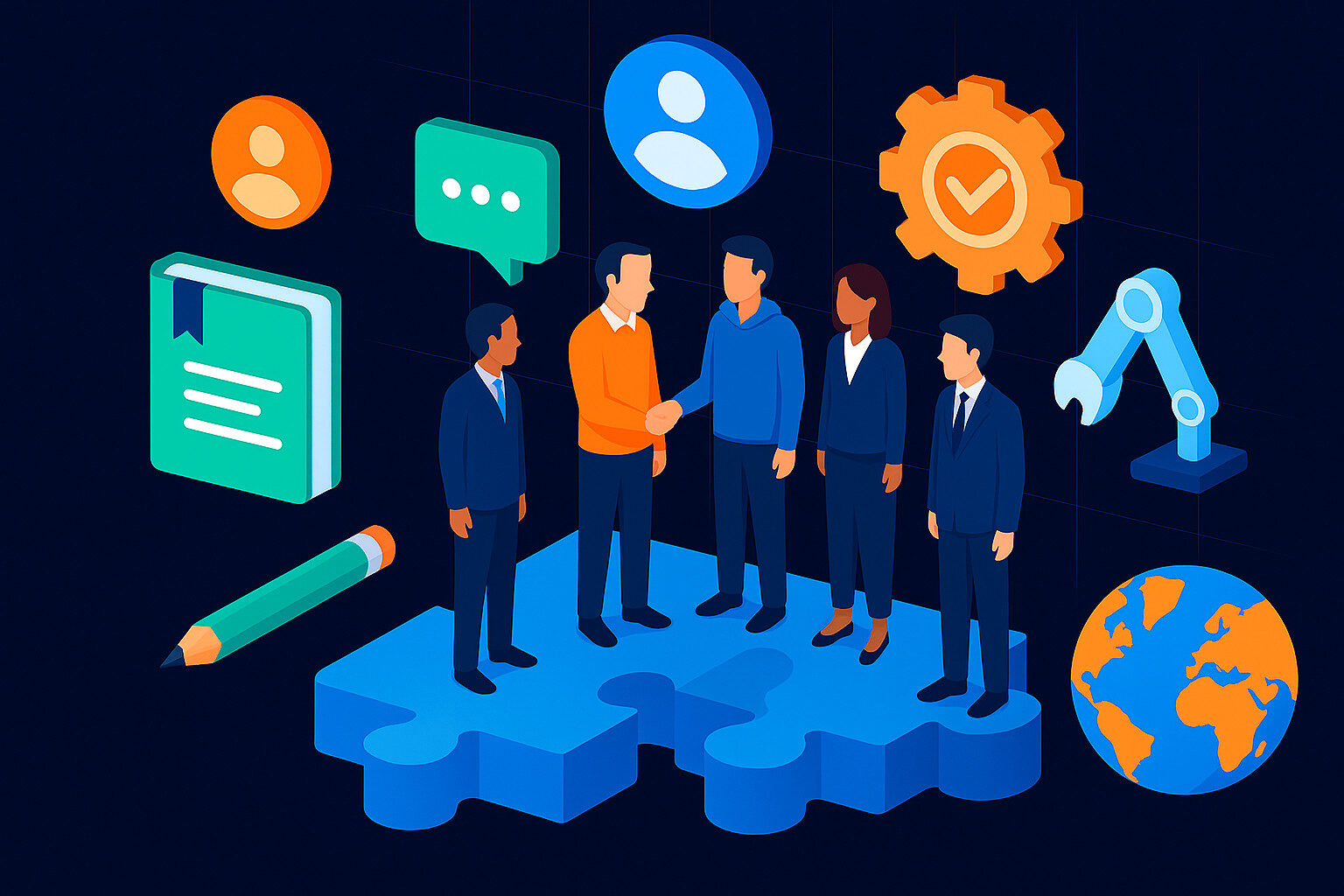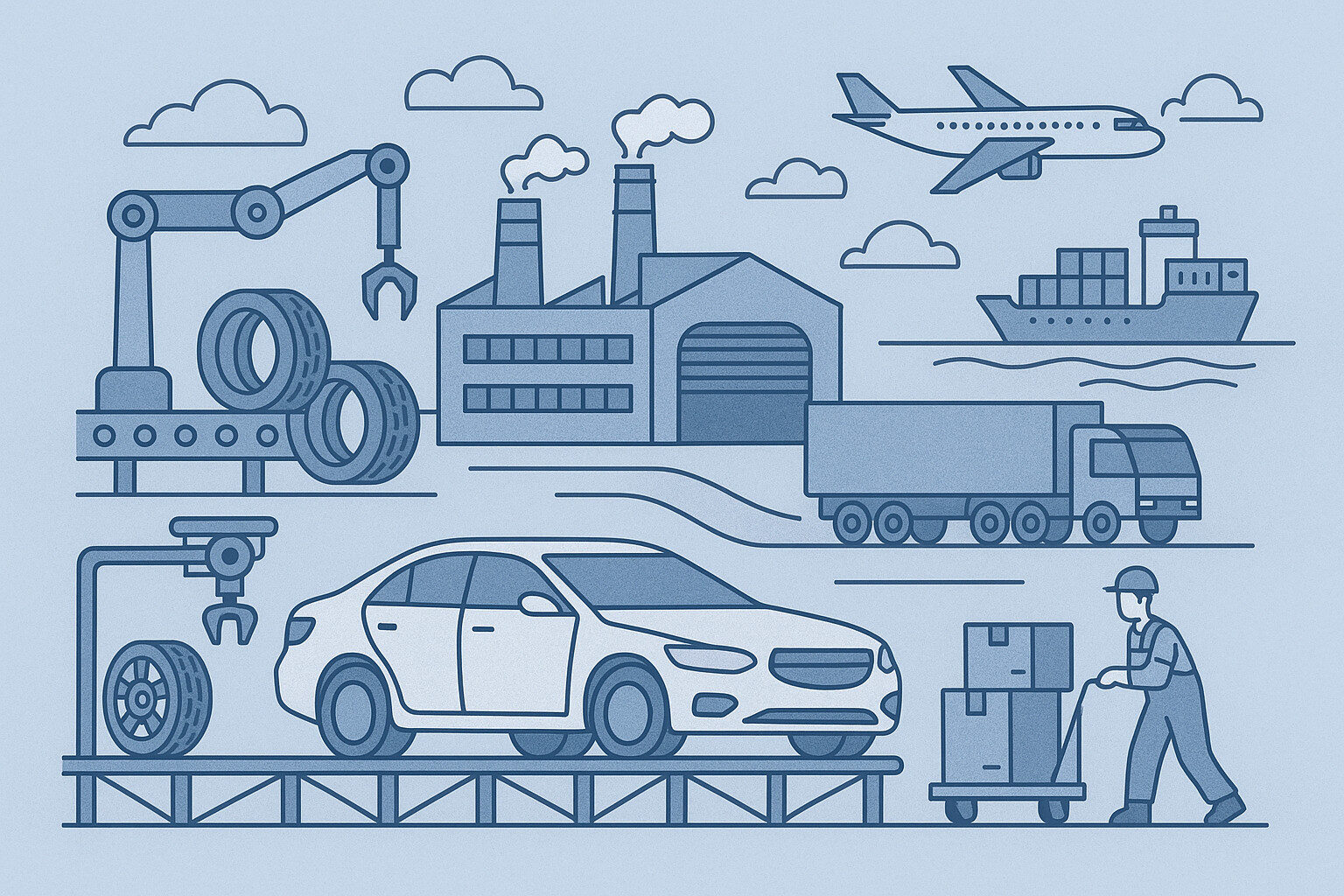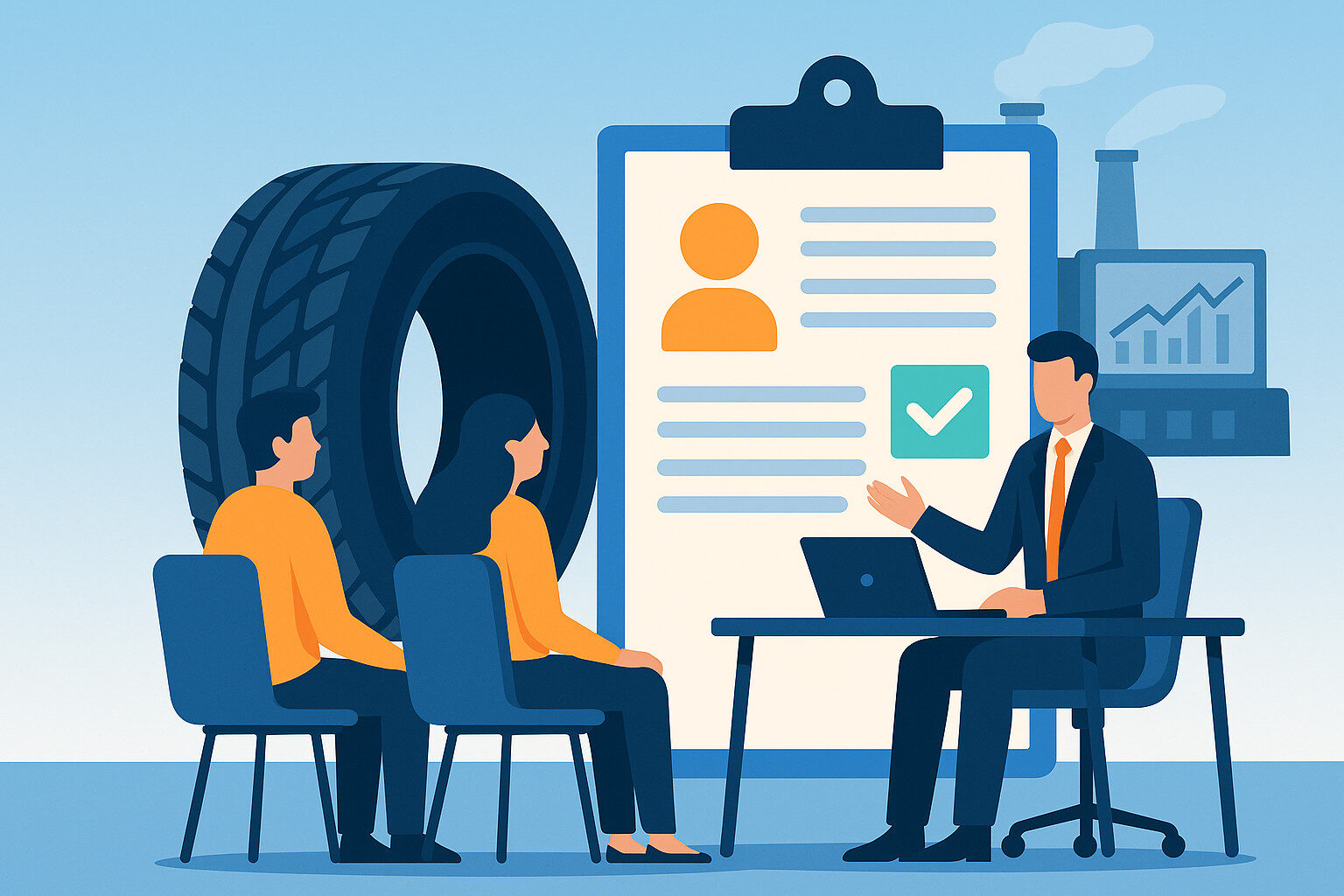The future of industrial America depends on one thing: how effectively we master Gen Z manufacturing recruitment.
With baby boomers retiring and millennials moving into mid-career roles, the next generation born between 1997 and 2012 is stepping into the workforce with new expectations, values, and priorities. For manufacturing leaders, this shift represents both a challenge and an opportunity: how to attract, motivate, and retain a generation that thinks, communicates, and works differently than any before it.
According to Deloitte’s 2024 Manufacturing Workforce Study, over 2.1 million U.S. manufacturing positions could go unfilled by 2030 due to talent shortages. The key to closing this gap isn’t automation or offshoring, it’s learning how to engage Gen Z workers meaningfully.
Let’s break down how manufacturers can build a multi-generational, future-ready workforce, powered by clarity, mentorship, and purpose-driven recruiting.

1. The Changing Workforce Landscape
For decades, manufacturing thrived on consistency, loyalty, and craftsmanship. But today’s industry looks drastically different.
Factories are smarter, production lines are digital, and job roles require tech-savvy, analytical thinking more than pure physical skill.
Yet, while technology has evolved rapidly, workforce culture hasn’t always kept pace.
Here’s the generational snapshot in U.S. manufacturing today:
Generation | Born | % of Workforce (Manufacturing, 2025 Projection) | Key Traits |
Baby Boomers | 1946–1964 | 15% | Loyal, experienced, leadership-driven |
Gen X | 1965–1980 | 25% | Independent, pragmatic, adaptable |
Millennials | 1981–1996 | 40% | Collaborative, growth-oriented, tech-enabled |
Gen Z | 1997–2012 | 20% (and rising fast) | Digital natives, purpose-driven, feedback-hungry |
(Source: U.S. Bureau of Labor Statistics, Deloitte Insights)
The takeaway? Gen Z isn’t the future of manufacturing, they’re the present.
If companies fail to adapt, they risk losing the next generation of innovators to industries perceived as “cooler” tech, clean energy, or logistics startups.
2. Understanding Gen Z: What Drives Them
Manufacturers often assume that competitive pay and job stability are enough to attract young workers. But for Gen Z, the motivations go deeper.
a) They Crave Purpose, Not Just Pay
A McKinsey & Company 2024 survey found that 72% of Gen Z workers rank “meaningful work” as their top motivator outranking salary.
They want to know why their role matters and how it contributes to the company’s broader mission whether it’s sustainable production, innovation, or community impact.
Example: A tire manufacturer that promotes sustainability (like reducing emissions through eco-friendly materials) will attract Gen Z more effectively than one focused solely on output volume.
b) They Value Growth and Learning
Gen Z views every job as a stepping stone toward growth. According to LinkedIn’s 2024 Workforce Report, 76% of Gen Z professionals say they would leave a company within a year if they see no learning or advancement opportunities.
That means manufacturers must go beyond “on-the-job training.” They need structured mentorship, career ladders, and certification pathways to retain young workers.
Example:
Create a “30-60-90 Career Growth Framework” for new hires mapping skill goals and promotion criteria clearly.
c) They Expect Feedback Constantly
In the world of Instagram and TikTok, feedback is instantaneous.
Gen Z expects the same responsiveness at work. Traditional annual performance reviews feel outdated.
Instead, adopt monthly or bi-weekly check-ins, where supervisors discuss progress, recognition, and learning opportunities.
Stat to Note:
Companies that implement frequent performance conversations experience 37% higher employee engagement (Gallup Workplace Report 2024).
d) They Prioritize Work-Life Integration
Unlike prior generations, Gen Z doesn’t separate life and work; they seek balance and flexibility.
Manufacturers that offer hybrid scheduling for non-production roles, mental health programs, or even modern amenities (like wellness zones or digital shift apps) are already seeing a spike in retention.
3. The Manufacturing Image Problem
Before solving recruitment, manufacturers must face the perception issue:
To Gen Z, manufacturing is often seen as dirty, dangerous, or outdated.
However, reality paints a different picture. Modern facilities use AI-driven robotics, data analytics, and automation environments more like NASA than a 1950s factory floor.
Solution: Rebrand Manufacturing as a Career of Innovation
Key Steps:
- Showcase real employee stories on social media (especially TikTok and LinkedIn).
- Highlight technology sensors, robotics, automation in job descriptions.
- Use visuals that appeal to digital natives (clean, modern, high-tech imagery).
- Partner with local schools and technical colleges for factory tours.
4. Writing Job Descriptions That Attract Gen Z
Here’s where Hire.TalentTraction.org becomes a game-changer.
Most manufacturing job posts still read like compliance documents dense, repetitive, and uninspiring.
Gen Z won’t read them. They skim.
The solution? Use AI-powered job description generators (like the one on Hire.TalentTraction.org) to create clear, engaging, and purpose-driven listings.
Example Before & After:
❌ Before:
“Responsible for operating CNC machinery, following safety protocols, completing reports, and performing preventive maintenance.”
✅ After (AI-optimized):
“As a CNC Operator, you’ll help shape the next generation of precision manufacturing. You’ll work with state-of-the-art equipment, collaborate with a supportive team, and see your craftsmanship turn into real products every day.”
Result:
A human-centered tone + impact-driven phrasing = 4x higher application rate among Gen Z candidates.

5. Building a Culture That Keeps Gen Z
Once you’ve hired Gen Z employees, retention becomes the real challenge.
A study by The Manufacturing Institute (2024) found that turnover among workers aged 22–27 averages 38% within the first 18 months primarily due to poor culture fit.
Here’s how to reverse that trend:
a) Create Mentorship Programs
Pair Gen Z employees with experienced supervisors or retiring baby boomers.
It’s not just about training it’s about knowledge transfer and relationship-building.
Tip: Make it a two-way mentorship. Gen Z can teach digital tools, while older workers share process wisdom.
b) Recognize and Reward Publicly
Public acknowledgment matters. Celebrate milestones, certifications, safety streaks, or innovation ideas on internal dashboards or LinkedIn.
Stat: Recognition programs increase retention by 31% (WorkHuman Survey, 2024).
c) Encourage Internal Mobility
Gen Z thrives on variety. Rotate them through departments production, quality assurance, logistics to build engagement and skills.
d) Foster a Culture of Psychological Safety
Gen Z values inclusion and mental well-being.
Encourage open communication, anonymous feedback, and safe spaces for dialogue. Train managers to lead with empathy, not authority.
6. Using Data to Refine Your Gen Z Hiring Strategy
Data-backed recruiting is the future of manufacturing HR.
Here’s what top-performing companies track:
Metric | Why It Matters | Ideal Range |
Time-to-Fill | Measures hiring efficiency | ≤ 45 days |
Quality of Hire | Tracks new hire performance | 80%+ success |
Early Attrition Rate | Detects onboarding issues | < 10% |
Engagement Score | Predicts retention risk | ≥ 70% |
7. Building the Bridge: Multi-Generational Collaboration
Manufacturing success now depends on how well we blend generations.
- Baby Boomers bring deep technical knowledge.
- Gen X offers leadership and reliability.
- Millennials drive innovation.
- Gen Z adds creativity, digital fluency, and agility.
The best-performing plants are those that bridge these mindsets, not separate them.
Practical Idea:
Create cross-generational project teams pair senior engineers with Gen Z data analysts to co-develop efficiency solutions.
This creates mutual respect and continuous learning on both sides.
8. The Role of Leadership: Coaching Over Commanding
Traditional command-and-control leadership doesn’t resonate with Gen Z.
They want leaders who coach, guide, and listen.
Adopt a Modern Leadership Style:
- Replace micromanagement with empowerment.
- Offer autonomy with accountability.
- Conduct “stay interviews” to understand what keeps them motivated.
Quote to Remember:
“People don’t leave companies, they leave managers.”
Investing in leadership development is investing in retention.
9. Real-World Example: Toyota’s Gen Z Engagement Model
Toyota USA faced similar challenges with younger workers entering its Georgia and Kentucky plants.
Their solution: The “NextGen Manufacturing Program.”
Key initiatives:
- Rotational internships with direct mentorship.
- Internal TikTok ambassador program showcasing innovation.
- Mental health ambassadors for younger employees.
- AI-driven training simulations for hands-on learning.
Result: 22% faster hiring, 33% higher retention, and stronger employer branding across Gen Z job seekers.
10. Conclusion: The Future of Manufacturing Belongs to the Next Generation
Gen Z is not just another workforce segment they’re the key to redefining American manufacturing.
They bring digital dexterity, creativity, and a hunger for purpose qualities the industry needs more than ever.
The companies that will win the next decade aren’t the ones that automate the fastest they’re the ones that humanize the deepest.
By combining data-driven recruiting with empathetic leadership, and leveraging platforms like Hire.TalentTraction.org to write better, smarter job descriptions, manufacturing leaders can attract, engage, and retain the brightest Gen Z minds ready to build the future.
Key Takeaways
- Use AI tools like Hire.TalentTraction.org to modernize job postings.
- Offer structured mentorship and rotational programs.
- Align job purpose with sustainability and innovation.
- Replace annual reviews with continuous feedback.
- Promote inclusion and lifelong learning.




